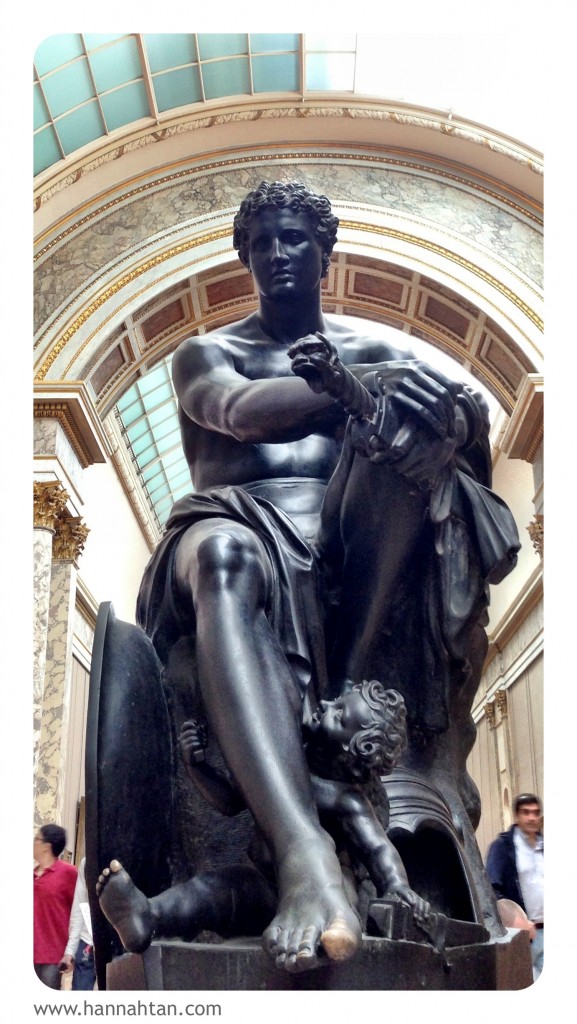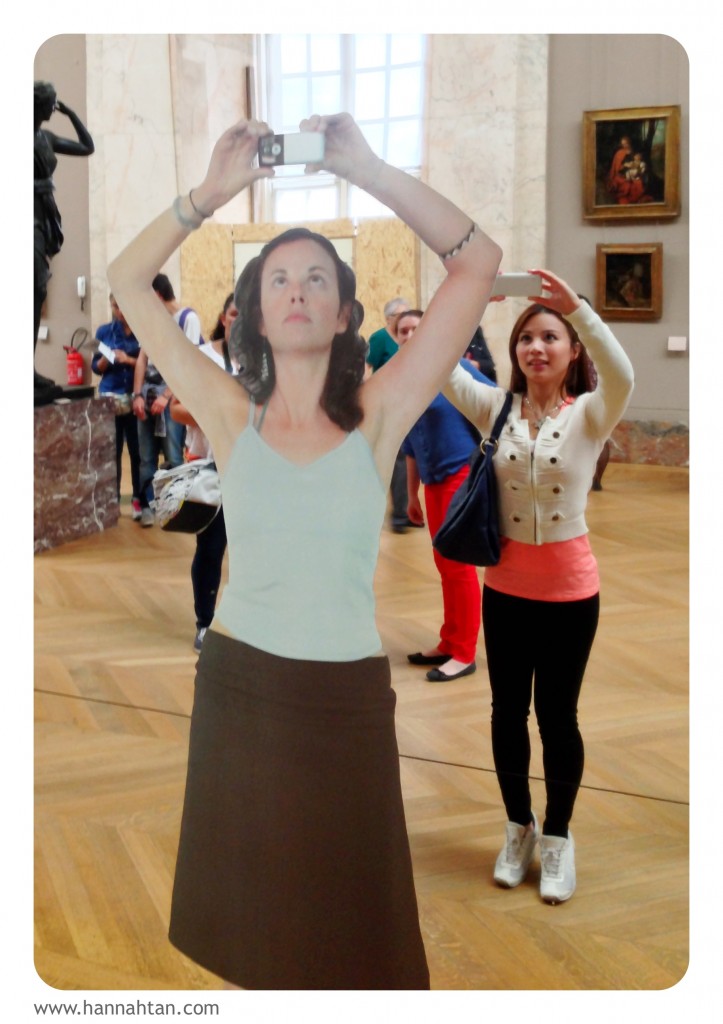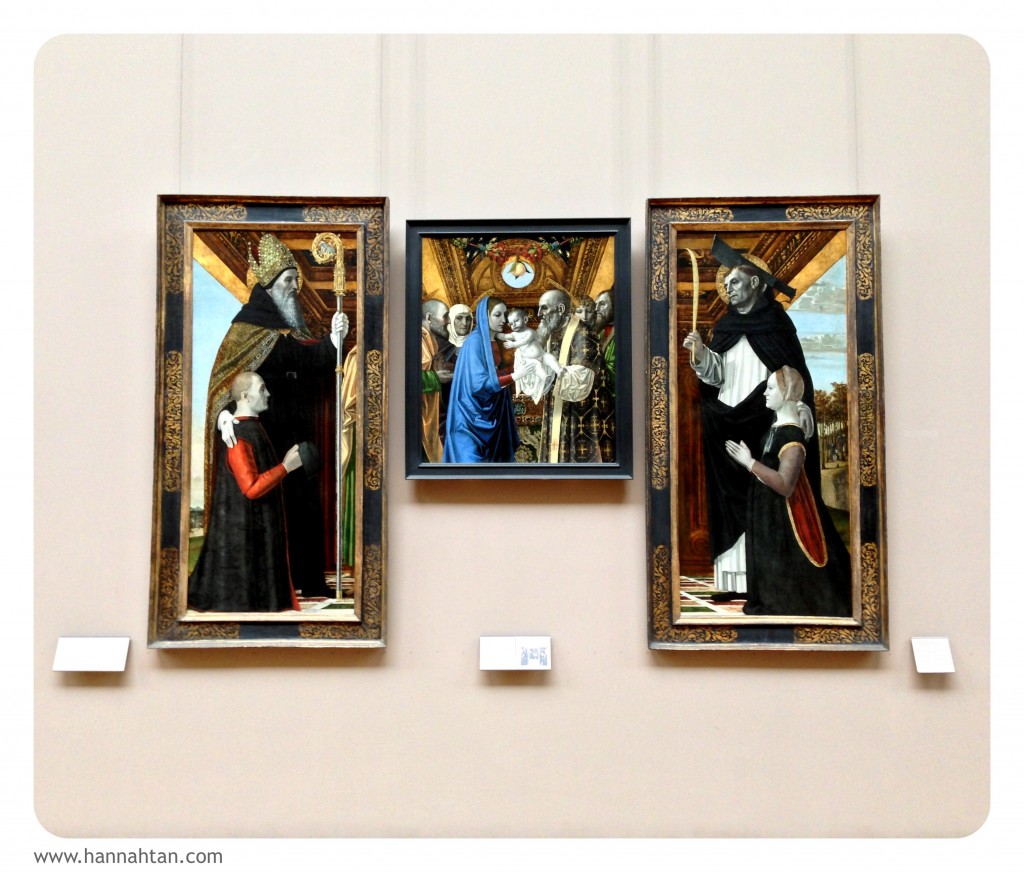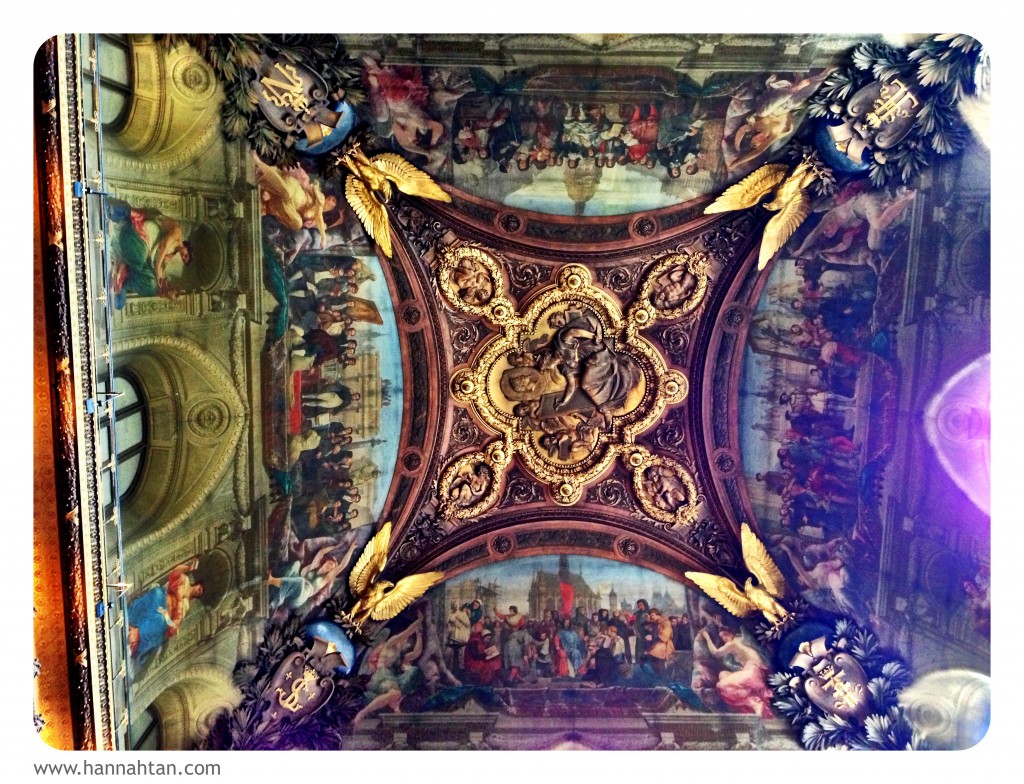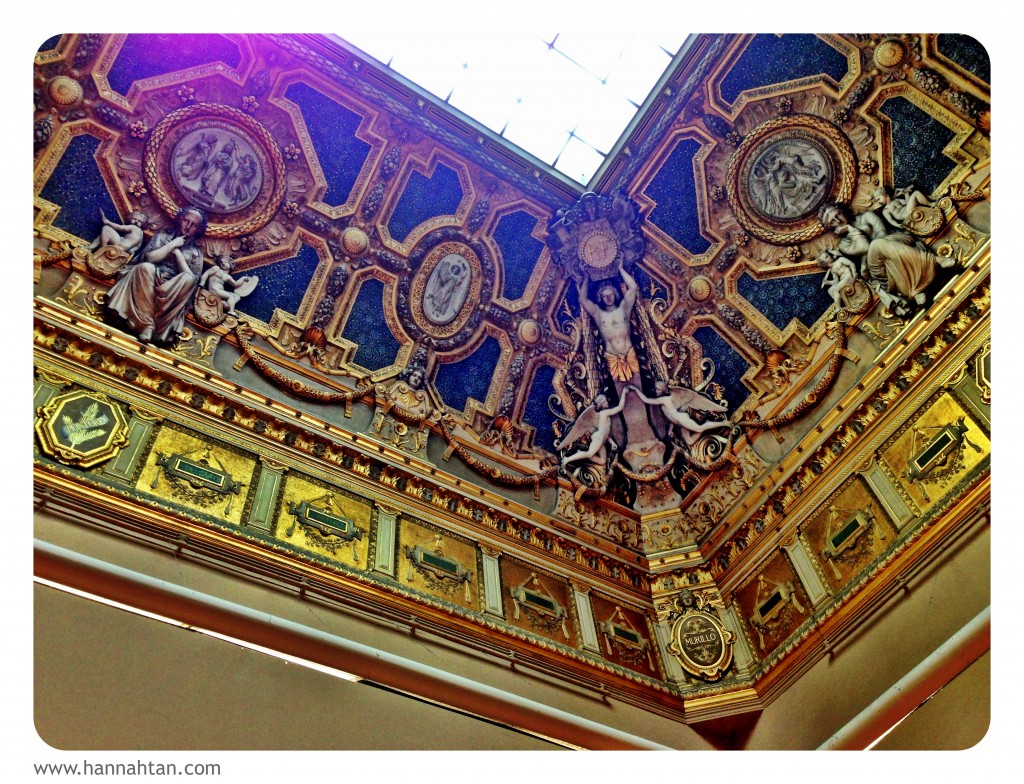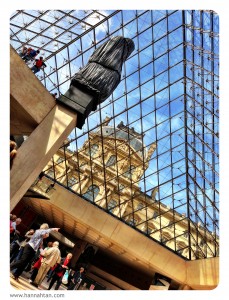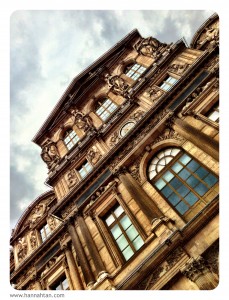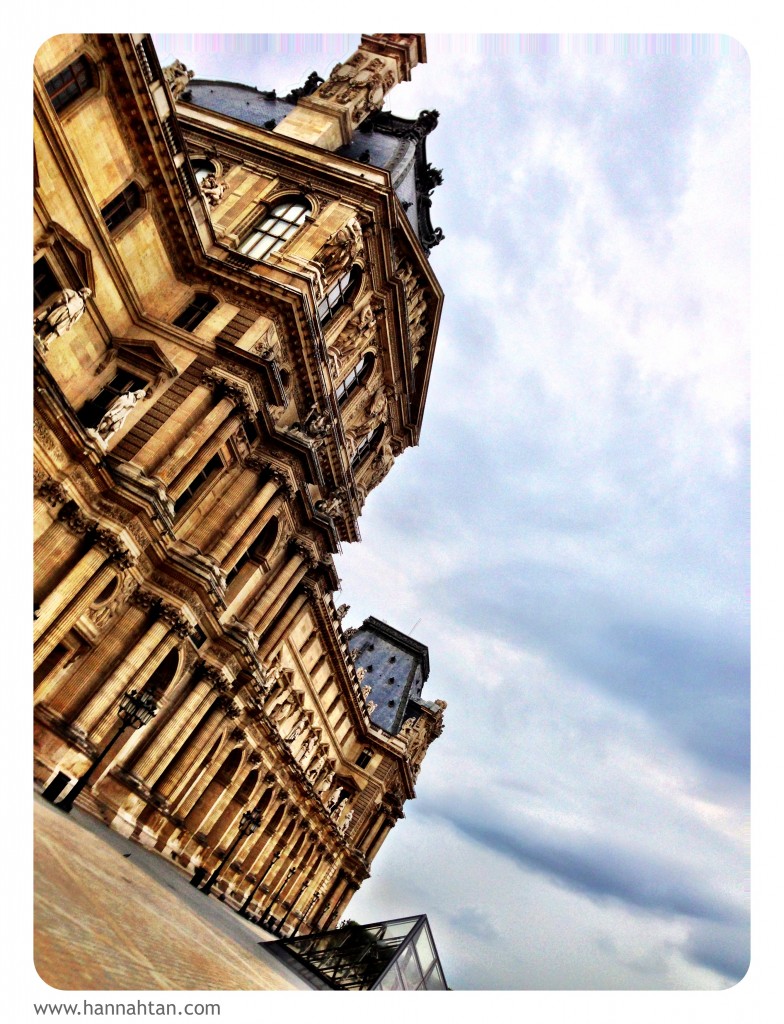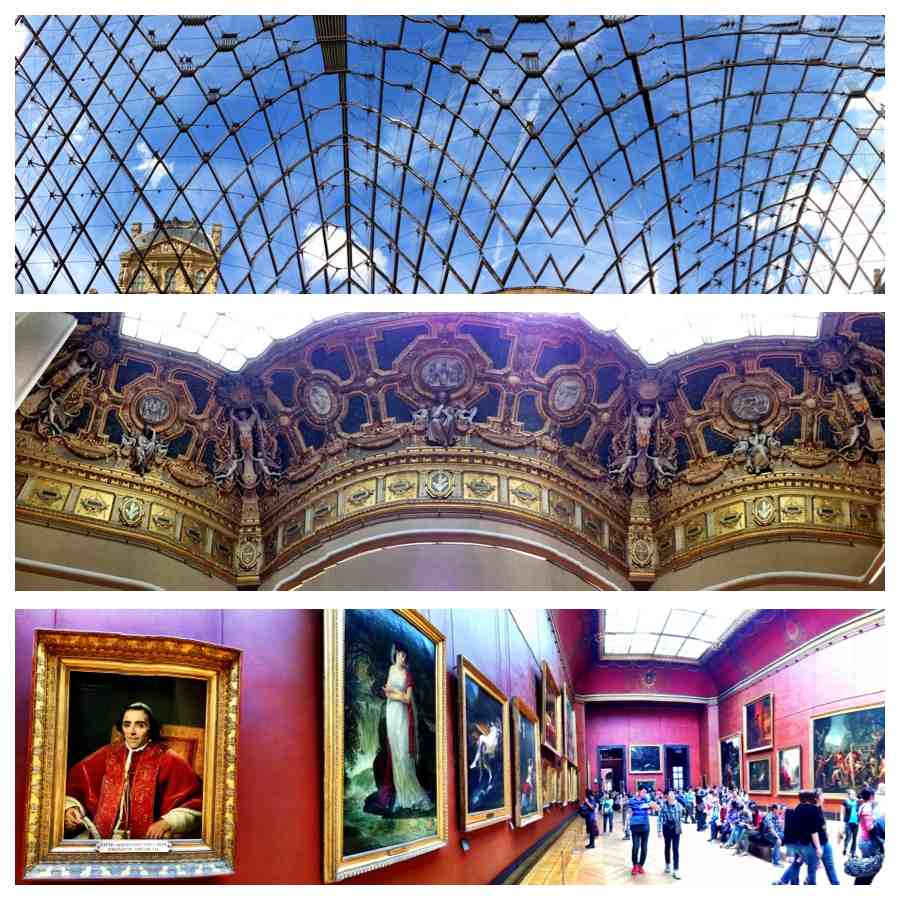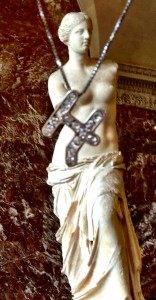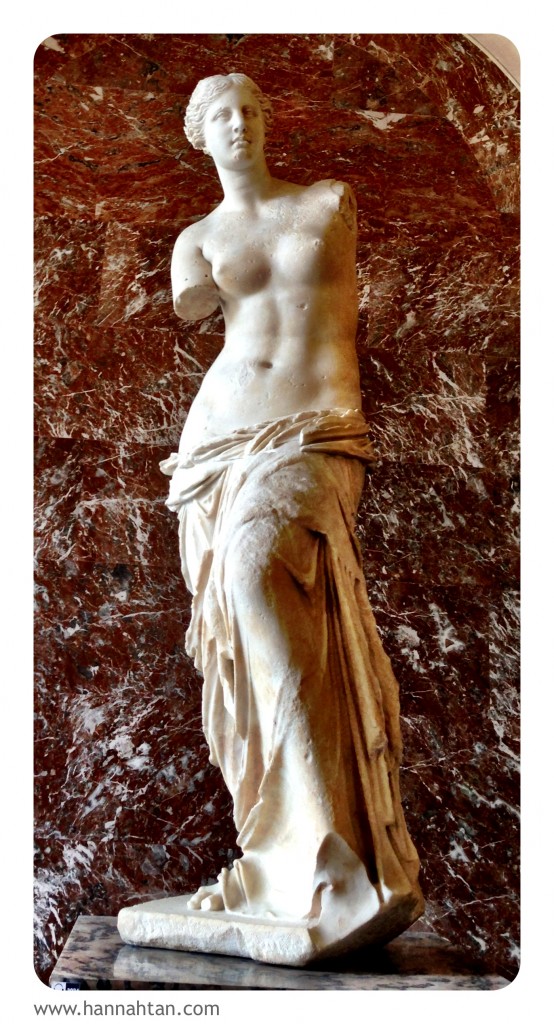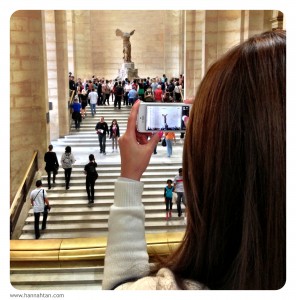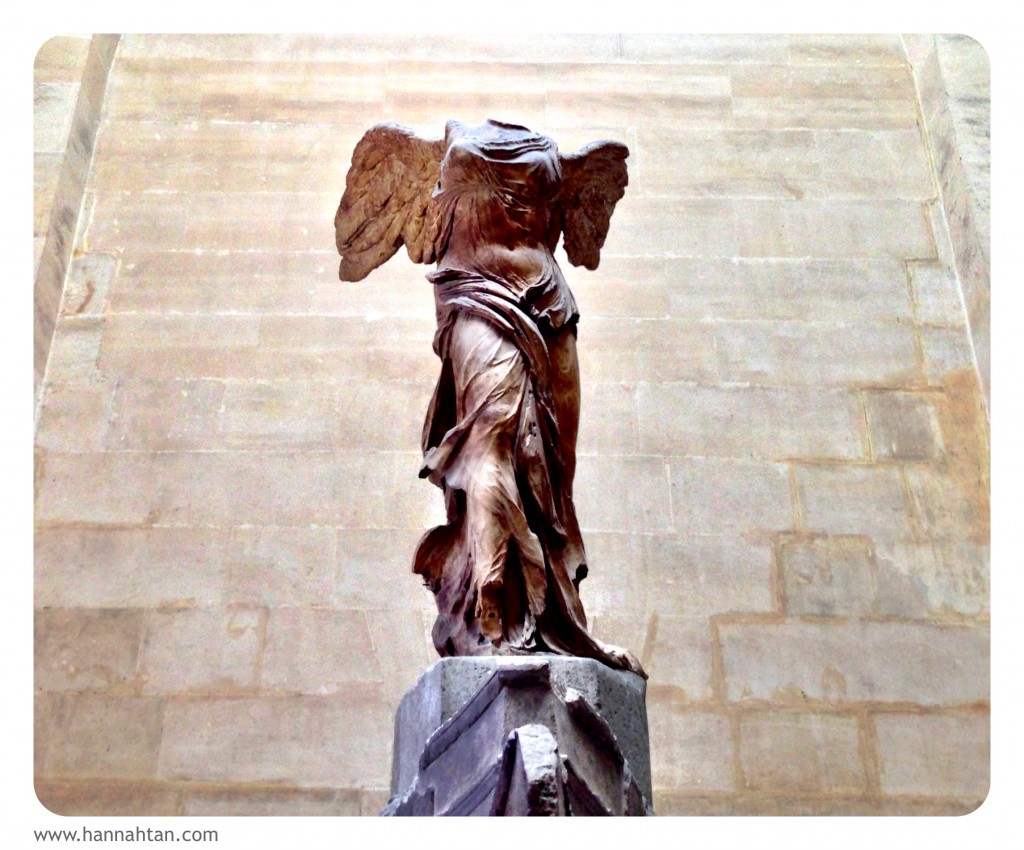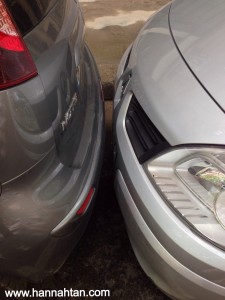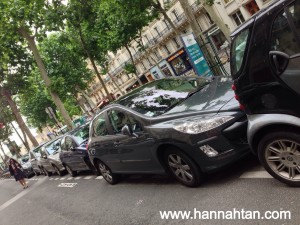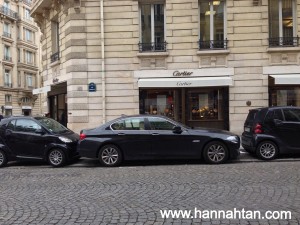As promised in yesterday's blog post - the video. :-D
Louvre is in the air...(Part 1)
Lol. Yeah I know how cheesy that sounds. *sheepish-grin* But, seriously, talking about the Louvre - How do you visit a museum with 380,000 objects, 35,000 works of art and several miles of corridors and galleries? If you are looking for a good exercise for your legs and brains then this, will definitely not let you down. *laugh*
Classified as the world's most visited museum, averaging 15,000 visitors per day; the Louvre is the world's second largest museum (after the Smithsonian in Washington D.C). It’s a sin to visit Paris and not step inside this magnificent building. :-p
Formally a medieval fortress and the palace of the kings of France, the Louvre’s collections, which range from antiquity to the first half of the 19th century, are said to be among the most important in the world. This is totally random, but y’know, I’ve always wondered – has anyone ever tried to rob the Louvre? Lol
Having sooooo many people walk through the different entrances of the building, their security must be really tight, right? Well, that’s what I thought, but visiting the Louvre for the second time, I realized that besides the bag scan going IN to the museum, nobody actually bothers you walking OUT. Oh well, I’m sure they got it totally under control. *putting-a-reign-on-my-wild-imagination*
Oh, one thing I have to warn you about visiting this place is the queue. If you’re visiting in the summer and don’t really fancy the idea of being stuck in a slow-moving line for an hour or two then buy your tickets in advance. You can do it online (www.louvre.fr) or you can even use the general Paris Museum Pass. (www.museums-of-paris.com/museum-pass.htm). Either way, you’re safe.
And if you’re extra kiasu, you can even enter for free on the first Sunday of every month month, and on July 14 (Bastille Day); provided you don’t mind squeezing with 24,000 other kiasu people (visitor numbers go up by about 60% on free-entry days).
If you’re heading to the Louvre for the first time, the next important thing you should do prior to your visit, is plan your route. Unless you want to wander aimlessly across 652,300 square feet of artefacts and art that may not entirely make sense to you, chart your visit very carefully. Decide what you want to see first. If you have no clue as to which masterpieces are more important to you than the others, the official Louvre website has visitor trail suggestions which you could potentially help (http://www.louvre.fr/en/parcours).
Despite this being my second visit, I still find myself in awe of everything, including the ceilings.
You can laugh all you want, but I am seriously intrigued with the details that go into making the Louvre, the spectacular work of art that it is, on its own. I mean, you can take away the contents of the museum and the Louvre will still be as interesting to explore, because of its architecture. What do you think?
A lot of people reckon that the 3 must-see works of art include the "big three" or shall I say the 3 Wonderwomen – Mona Lisa, Venus de Milo and the “Winged Victory" (a.k.a. the “Nike of Samothrace”). Let's start with the painting that most people are familiar with:
1) Mona Lisa
Leonardo da Vinci was probably one of the most talented and brilliant men of the 15th century, and among his many remarkable works of art and discovery is the Mona Lisa. Sure, there was the Vitruvian Man, the Last Supper, the concept of the helicopter, etc.; but one of his most recognizable work is the painting of what some critics argue to be the feminized picture of Leonardo himself. Interestingly enough, digital analysis has revealed that Leo’s facial characteristics and those of the woman in the painting are almost perfectly aligned with one another. *raise-eyebrows*
Look at the crowd!
Some others believe that the woman who posed as "Mona Lisa" was the daughter and wife of wealthy men, and it is believed that her husband paid Leo to paint her. Her actual name was Lisa Gheradini Giocondo although she was also known at that time as Mia Donna Lisa (my lady Lisa), which later got shorted to Monna Lisa. As you would’ve guessed, the missing “n” was a spelling mistake left uncorrected till to-date. *laugh*
FYI, the Mona Lisa was painted on wood, not canvas; and the portrait took Leo about four years to complete. Today, it is valued as a priceless item and is protected in a climate controlled environment encased in bullet proof glass. Oh and did you realize that she doesn’t have any eyebrows? :-D
2) Venus de Milo
She is now the second most famous work of art in the world, behind the Mona Lisa. Question is – is she Aphrodite, Venus, Artemis or Diana; and how exactly was she holding her (now missing) arms?
Apparently, Venus de Milo is the Romanized version of her name. Originally, or shall I say, more accurately, she is called Aphrodite of Melos (she was found by a Greek peasant on an island in the Aegean sea, called Melos). Aphrodite by the way, is the Greek goddess of love and beauty. Ooooo~
Ok, back to the story. At the time when the Greek peasant found Venus de Milo (1820), the Turks were in charge of Greece, so they obviously managed to just take the statue from the peasant without any resistance. Poor fella. Anyway, Venus de Milo was later sold to the French for 1,000 francs, roughly the cost of a sizable herd of goats. Not much huh, considering how priceless she is today.
The statue was presented to King Louis XVIII (who by the way, was so fat that he had to be moved around in a wheelchair) and the French sculptors tried to provide arms for the statue, depicting her holding all kinds of things, from apples to lamps, and pointing in various directions.
Nevertheless, the king later declared that Venus de Milo should be left armless, that her beauty should not be marred by the additions of any other sculptor; hence the armless sculpture you see today. :-)
3) “Winged Victory" (a.k.a. the “Nike of Samothrace”)
H.W. Janson (Russian-American scholar of art history) described it as "the greatest masterpiece of Hellenistic sculpture".
If you’re somewhat lost at this point, the Hellenistic period dates from the death of Alexander the Great in 323 BC to the emergence of ancient Rome. At this time, Greek cultural influence and power was at its peak in Europe and Asia. Hellenistic art/sculpture is basically the art/sculpture of that particular period of time.
While you’re thinking shoes and Michael Jordan; Nike, in reference to the “Winged Victory", is said to be a Greek goddess who personifies strength, speed, and victory.
She is seen with wings in most statues and paintings as with this particular one. Although it is incomplete (they are still yet to locate/unearth her head and hands), this statue of Nike it is considered as one of the greatest surviving masterpieces of its times.
There was seriously too much to see this trip, so I didn’t really get to cover much of the Louvre. Nevertheless, besides the "big three", I made it a point to check out the ancient Egyptian artifacts from the second millennium BC – so cool~ *grin*
Okay, here’s the thing. I’ve always wanted to visit Egypt. The rich cultural legacy of ancient Egypt has always intrigued me, but that’s another story. I look forward to visiting one of the oldest civilizations on earth some day, but in preparation for my future trip to Egypt (thank you God in advance! *grin*), this little excursion around the Louvre has definitely given me a taste of what to expect.
As you can see, a single day in this massive fortress of treasures isn’t enough; and if you’re planning to visit, don’t forget to bring some water, snacks or whatever it is that keeps you going. *wink* Till tomorrow's video! Mwah!
Taking parallel parking to the next level
“A man who is a master of patience is master of everything else. ”
Let’s face it. Parallel parking isn’t the most enjoyable thing you can do with your car. According to a scientific research in 2009 led by Dr. Claudia Wolf from the Ruhr University in Germany, female drivers took an average of 20 seconds longer to park compared to their male counterparts, and yet were still less likely than men to park accurately. Well, that’s another story, but regardless of gender, I believe many drivers would still agree that parallel parking is indeed an ordeal that would require some degree of skill. Lol
Spending some time in Paris made me realize how such a skill is so vital for people who want to drive within the city, which probably explains why most people say that Parisians (and to some extent New Yorkers too) are world champions at the art of creative parking.
Seeing how close the cars in Paris are parked to each other makes you wonder how they even got there in the first place. Being millimeters apart I’m guessing either one of two things – Parisians have serious precision parking skills or they have perfected the art of bumper-car maneuvering. Lol
Truly amused, I managed to sneak some photos to illustrate the fascinating discovery.
If you're up for a few creative parking tips, try searching the web for "Parallel parking in Paris", and you'll find some rather entertaining videos to illustrate just that. Hehe.
I can’t help but feel so fortunate knowing that we as drivers don’t have to subject ourselves to such torment back home in Malaysia. For one, we have significantly more space within our “legal” slash dedicated parking slots; and for the other, it is not a norm for drivers to go around bumping into one another’s cars, and getting away with it so easily.
Sure, parking assist technologies like cameras and sensor systems can be quite reassuring, yet for the parking-impaired, nothing beats self-park cars (hint to the husbands). Soon, with autonomous vehicles, we wouldn’t even need a driving licence, but until then, when it comes to parallel parking, I’d say, practise makes perfect.




